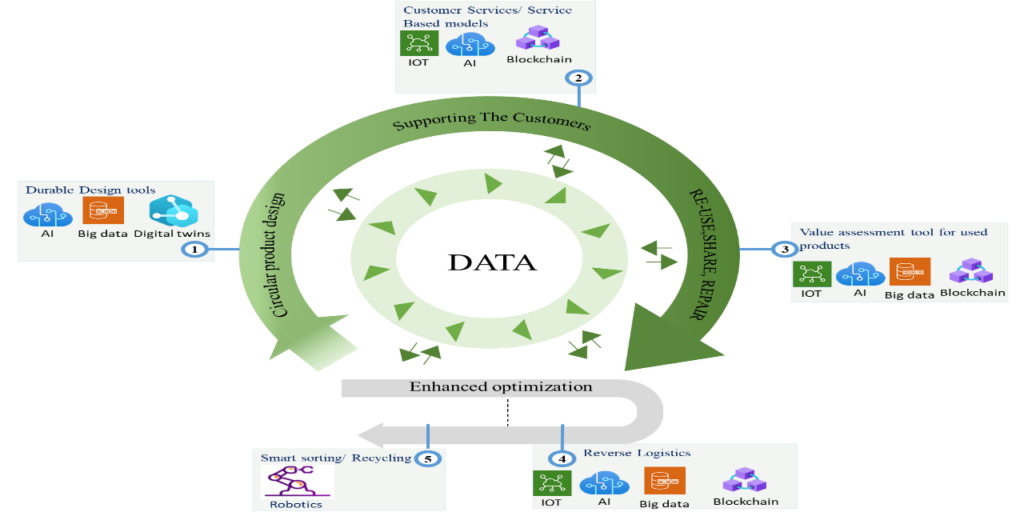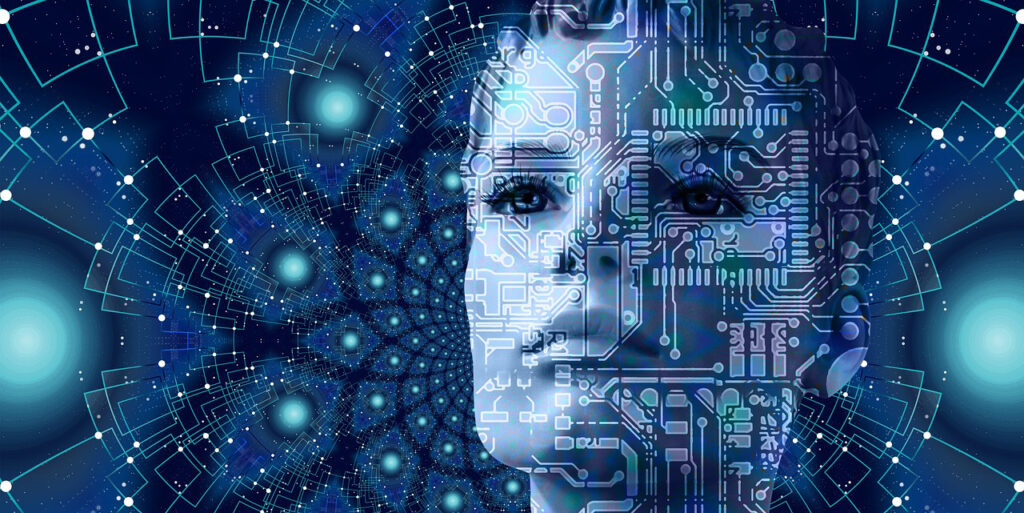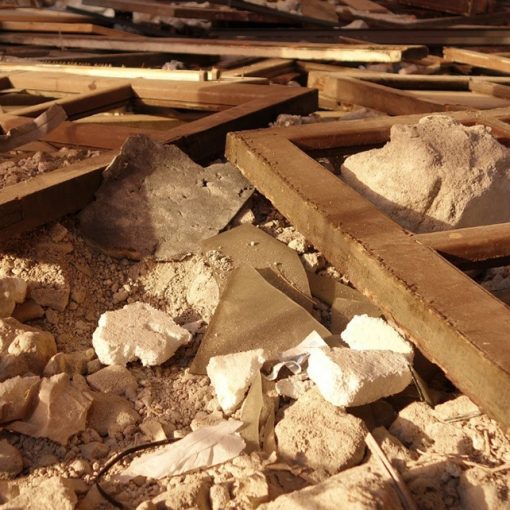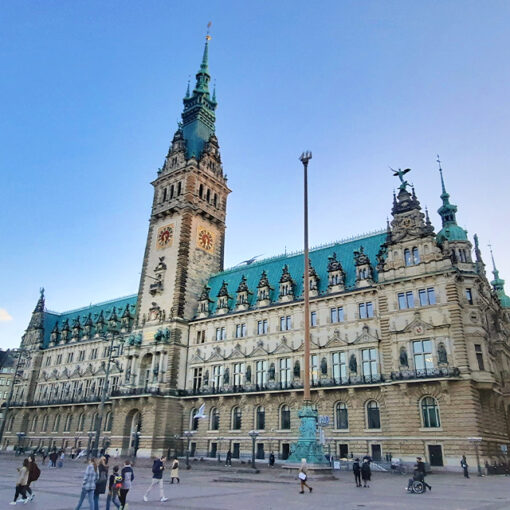Product design plays an important role in circular value creation and supply chain. Implementing circular strategies in the phase of product design is vital, since once the resources, characteristics and specifications are allocated to the specific product, only minor changes can be made. Companies are required to implement strategies related to narrowing, slowing, and closing the loops in their product designs. Hence, they need to develop more innovative solutions for which they face many challenges. (Bocken et al. 2014.) The fourth industrial revolution known as 4IR, includes digital technologies such as Big Data, Artificial Intelligence (AI) and Internet of Things (IoT) which can pave the way for industries in their path towards circularity (Image 1). (World Economy Forum 2018.)

Ellen MacArthur Foundation identifies AI as an important subset of technologies that can help in enhancing product circulation through smart management and predictive capabilities. AI can accelerate circular product design through massive data collection and analysis, as well as fast testing and prototyping. (Ellen MacArthur 2019.)
AI and circularity of products
AI plays important roles in circulation of products in three different ways:
- AI helps in closing the loops by improving the reverse logistics infrastructure. Improving sorting and disassembly, remanufacturing processes, and recycling of materials.
- AI helps in expanding innovative business models by combining real-time and historical data. Data from product usage will help predictive maintenance and smart inventory management.
- AI helps in design out waste in circular economy through testing through machine learning assisted design processes

AI can be used for optimizing circular infrastructures, for example improving efficiency in sorting waste materials. Therefore, increasing the value of recycled and recovered materials. Robots enable precise waste management which enhances opportunities of reuse cases. In addition, AI technologies enable development of platforms which enable extension of product lifetime, for example sharing platforms for reused and second-hand products. (Ghoreishi & Happonen 2020)
Author
Malahat Ghoreishi is a lecturer at LAB University of Applied Sciences in sustainable solutions programme. She is also a researcher in digitalization and circular economy, focusing on the capabilities on AI for circular solutions and business models.
References
Bocken, N.M.P., Farracho, M., Bosworth, R. & Kemp, R. 2014. The front-end of eco-innovation for eco-innovative small and medium sized companies. Journal of Engineering and Technology Management.Vol. 31(1), 43–57. Cited 28 Nov 2022. Available at https://doi.org/10.1016/j.jengtecman.2013.10.004
Ellen MacArthur Foundation. 2019. Artificial intelligence and the circular economy – AI as a tool to accelerate the transition. Cited 28 Nov 2022. Available at http://www.ellenmacarthurfoundation.org/publications
geralt. 2018. 3157431. Pixabay. Cited 16 Dec 2022. Available at https://pixabay.com/photos/trace-circuit-board-technology-3157431/
Ghoreishi, M. and Happonen, A. 2020. New promises AI brings into circular economy accelerated product design: A review on supporting literature. E3S Web of Conferences. Vol. 158. Cited 28 Nov 2022. Available at https://doi.org/10.1051/e3sconf/202015806002
World Economic Forum. 2018. Harnessing the Fourth Industrial Revolution for the Circular Economy Consumer Electronics and Plastics Packaging. World Economic Forum. Cited 28 Nov 2022. Available at https://www3.weforum.org/docs/WEF_Harnessing_4IR_Circular_Economy_report_2018.pdf




